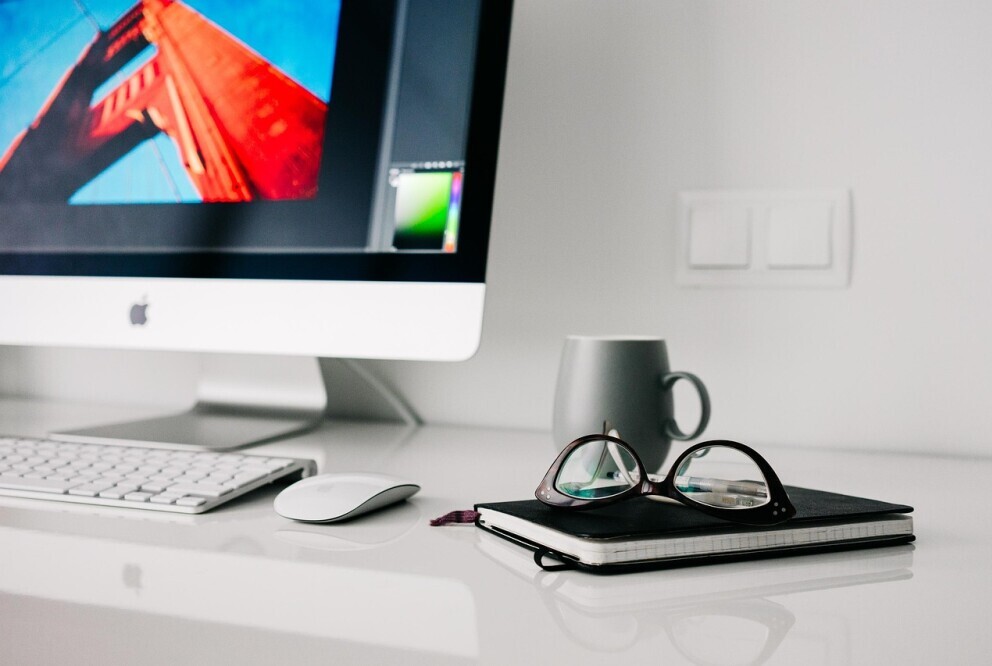Eco Friendly Household Swaps
Switching to eco-friendly products is, simply put, better for both you and the environment. When I look at what gets put in our garbage cans, the waste is colossal. Imagine what piles up in landfills and how much we discard, generating toxins in our own homes. By choosing wisely and switching to eco-friendly cleaners and products, we can be more environmentally safe, reduce our carbon footprint, and have a much healthier home in the process.
Traditional cleaning agents are often filled with harsh chemicals that can linger in the air, lowering indoor air quality. These chemical residues may not only tarnish surfaces but can also affect our breathing and health over time. Making eco-friendly cleaning choices can help create a safer home environment.
Our homes often get cluttered with unnecessary chemical products. These aren’t just bad for the environment—they also add to the mess in our living spaces. Opting for eco-friendly swaps reduces clutter, making it easier to manage our belongings.
How do you start? One room, one problem at a time in your home. Start by using a “swap” process in the room you use most frequently, then move on to less frequently used areas of your home. The long-term benefits will show up, both in terms of your health and the well-being of your family.
Switching to Eco-Friendly Cleaners for a Breath of Fresh Air

Tackling grime and dirt doesn’t have to mean using strong, chemical-packed cleaners. Put away the bleach and start using something healthier. Natural solutions for the clean you seek are available, allowing you to avoid the toxic aftermath. Citrus-based cleaners, vinegar, and baking soda are excellent alternatives that keep both surfaces and the air fresh.
When selecting green cleaning products, it’s helpful to check out the labels. Look for products that disclose their ingredients, particularly those marked as ‘non-toxic’ or ‘biodegradable’. Your lungs and the environment will thank you later. Breathing is a critical part of your health, and it all starts by avoiding strong, toxic cleaners that can lead to adverse health effects.
For those who love a hands-on approach, consider whipping up some DIY cleaning concoctions. Simple mixes using vinegar or essential oils can tackle everything from countertops to floors, making your cleaning routine both effective and eco-friendly. I often use essential oil formulas to get those clean, fresh smells I desire without the toxic residue.
It’s important to store these natural cleaners properly to maintain their effectiveness. Keep them in cool, dry places and ensure they’re clearly labeled to avoid any mix-ups. Proper storage is key to ensuring safety and maximizing the shelf-life of your eco-friendly solutions.
Ensuring a Safe and Healthy Home Environment

Keeping your family safe means integrating non-toxic solutions into your daily routine. Start by reevaluating your cleaning arsenal and transitioning to options that are free from VOCs—volatile organic compounds that can harm air quality and health.
Get the whole family involved by teaching kids about sustainable choices. Introducing them to simple eco-friendly habits, like recycling or reusing, can foster a sense of responsibility and help them understand the bigger picture.
When you’re shopping for products, it’s good to be informed about safety certifications. Labels like ‘EPA Safer Choice’ or ‘Green Seal’ aren’t just symbols—they assure you that these products meet environmental and health standards.
It’s crucial to keep tabs on your indoor air quality. Regularly airing out rooms and using houseplants to naturally purify the air can make a big difference. Plus, having a good ventilation system in place supports a healthier home atmosphere.
Clutter-Free Living: Balancing Minimalism and Eco-Friendliness
Living with less often leads to more peace of mind, especially when it comes to reducing household clutter. Start by identifying items that can be recycled or repurposed instead of tossed away. This approach not only limits waste but also makes your home feel more spacious.
Minimalism doesn’t mean giving up comfort—it’s about keeping the essentials that matter. Go through each room and see what can be donated, sold, or reused. A good rule of thumb is if you haven’t used it in over a year, it might be time to let it go.
Repurposing and recycling can turn trash into treasure. Upcycling old furniture or using glass jars for storage are perfect examples of how creative solutions can minimize clutter sustainably.
Set up a system for storing your eco-friendly supplies to avoid chaos. Clear storage containers with labels are great for keeping everything organized and accessible, ensuring that you can maintain your green lifestyle without the mess.

This post is a thoughtful and practical reflection on managing situations when you’re on offer pages or dealing with service inquiries. I really appreciated how you emphasize clarity, transparency, and professionalism to ease the way for both sellers and buyers. Two questions for you: What approach do you recommend when negotiating offers or handling counteroffers—should you respond directly or ask more questions first? Have you found any tools or templates that streamline responding to offers while keeping your tone friendly and professional?
Thanks for sharing these insights—I know they’ll help many streamline their online transactions with confidence!
This post really hits home for me! I’ve recently started transitioning to eco-friendly household products, and I’m already noticing the difference—especially in how fresh and clean the air feels. It’s eye-opening to think about how much waste we generate daily without even realizing it. I love the suggestion of taking it one room at a time; it makes the whole process feel more manageable and less overwhelming.
I’ve also begun making my own DIY cleaners with essential oils and vinegar, and not only are they effective, but they also smell amazing without the synthetic fragrances. Plus, getting the family involved has turned into a fun way to teach my kids about sustainability.
I’m curious—has anyone found a favorite go-to green product or DIY recipe that works wonders? I’m always looking to add to my eco-friendly toolkit!
This article makes such a strong case for how small, intentional changes in our homes can have a big impact on both our health and the planet. I especially appreciated the reminder that eco-friendly living doesn’t have to be overwhelming. Starting with just one room or one product at a time makes the transition more manageable and sustainable.
What stood out most was the emphasis on reducing indoor toxins and clutter simultaneously. Choosing non-toxic cleaners and embracing minimalism really does lead to a home that feels lighter and healthier. The bonus, It teaches responsibility and mindfulness to everyone in the household; including kids.
And, I have a few questions to ask about the topic…
What’s one eco-friendly product you’ve swapped into your home recently?
Do you have any favorite DIY natural cleaner recipes or eco tips you’d recommend?
I totally get the struggle—my kid absolutely can’t stand the smell or feel of products like chlorine. It’s reassuring to know there are natural alternatives that clean just as well without all the harsh chemicals. Using citrus-based cleaners, vinegar, or baking soda sounds like a much safer and friendlier way to keep the house clean and the air fresh.
I also like the idea of checking labels for ‘non-toxic’ or ‘biodegradable’ claims. It makes a big difference when you want to protect your family’s health and the environment. Plus, making your own DIY cleaners with essential oils sounds fun and practical—getting that fresh scent without the chemical residue is a huge bonus.
Have you tried switching to natural cleaners for your home? How did your family, especially sensitive kids, respond to the change?
I really enjoyed how this article blends practical tips with a clear passion for eco-friendly living. The step-by-step “one room at a time” approach feels realistic and approachable, and I love the mix of store-bought green products and DIY cleaner ideas. It makes the switch feel accessible for everyone. The emphasis on indoor air quality and minimalism adds an extra layer of value, making it about more than just cleaning. In your experience, which eco-friendly swap has made the biggest difference in your home?
The concept of making intentional household swaps is a powerful reminder that small, consistent changes can add up to a significant environmental impact. Choosing eco-friendly materials, reducing single-use plastics, and incorporating natural cleaning solutions not only benefit the planet but also create a healthier home environment. These swaps often inspire a mindset shift; once you start replacing a few items, you naturally become more aware of consumption habits in other areas. Over time, these choices feel less like sacrifices and more like upgrades, offering durability, cost-effectiveness, and peace of mind.
The beeswax wrap alternative to plastic cling film is such a practical swap. Highlighting its dual purpose as both food storage and a way to support local beekeepers was very interesting for me. The DIY cleaning spray recipe with citrus peels and vinegar makes me ask if used coffee grounds can also be repurposed as a scouring scrub for tougher stains?
The section on bamboo toothbrushes raises an interesting point about biodegradability timelines. Do you find certain brands break down significantly faster in compost than others? These small switches feel manageable precisely because you’ve grouped them by room—starting with the kitchen first is genius.
This post is a real eye-opener, especially as someone who uses various cleaning products every day. Your insights into how traditional cleaning agents can linger in the air and negatively affect indoor air quality really resonated with me. It’s an everyday issue that we often overlook.
I appreciate your suggestion to tackle one room at a time and make simple swaps. This “one room, one problem” approach makes going green feel manageable rather than overwhelming. Additionally, your point about reducing clutter by choosing eco-friendly products—since they are often multipurpose or simpler—was something I hadn’t considered before, but it makes perfect sense now!
This post is just the gentle nudge I needed to rethink my cleaning routine and make more thoughtful, healthier choices for my home and family.
Making small eco-friendly swaps at home can add up to a big impact for the planet. For example, switching from plastic bottles to a reusable water bottle not only reduces waste but also saves money. Try using beeswax wraps instead of single-use plastic wrap—they keep food fresh and look cute too! Reusable shopping bags are another easy swap that helps cut down on plastic pollution. Even switching to LED light bulbs can lower your energy bills while being kinder to the environment. These simple changes make your household greener without sacrificing convenience.
There are so many wonderful biodegradable products on the market today in place of the harsh chemical cleaners of yesteryear, but they can add up price wise. As you mentioned, vinegar and baking soda work wonders on most household grime. If you add lemon juice and bicarbonate of soda to the mix, then you will have the cleanest house on the block.
This was an eye-opening read! We don’t use harsh chemicals at home, but your suggestion to start one room at a time really makes the process feel easier and less overwhelming. I also appreciated the reminder that eco-friendly choices go beyond just cleaning products. I believe this article can be especially helpful for those who still rely heavily on chemical-based cleaners—it’s a great starting point for making safer, healthier changes at home.